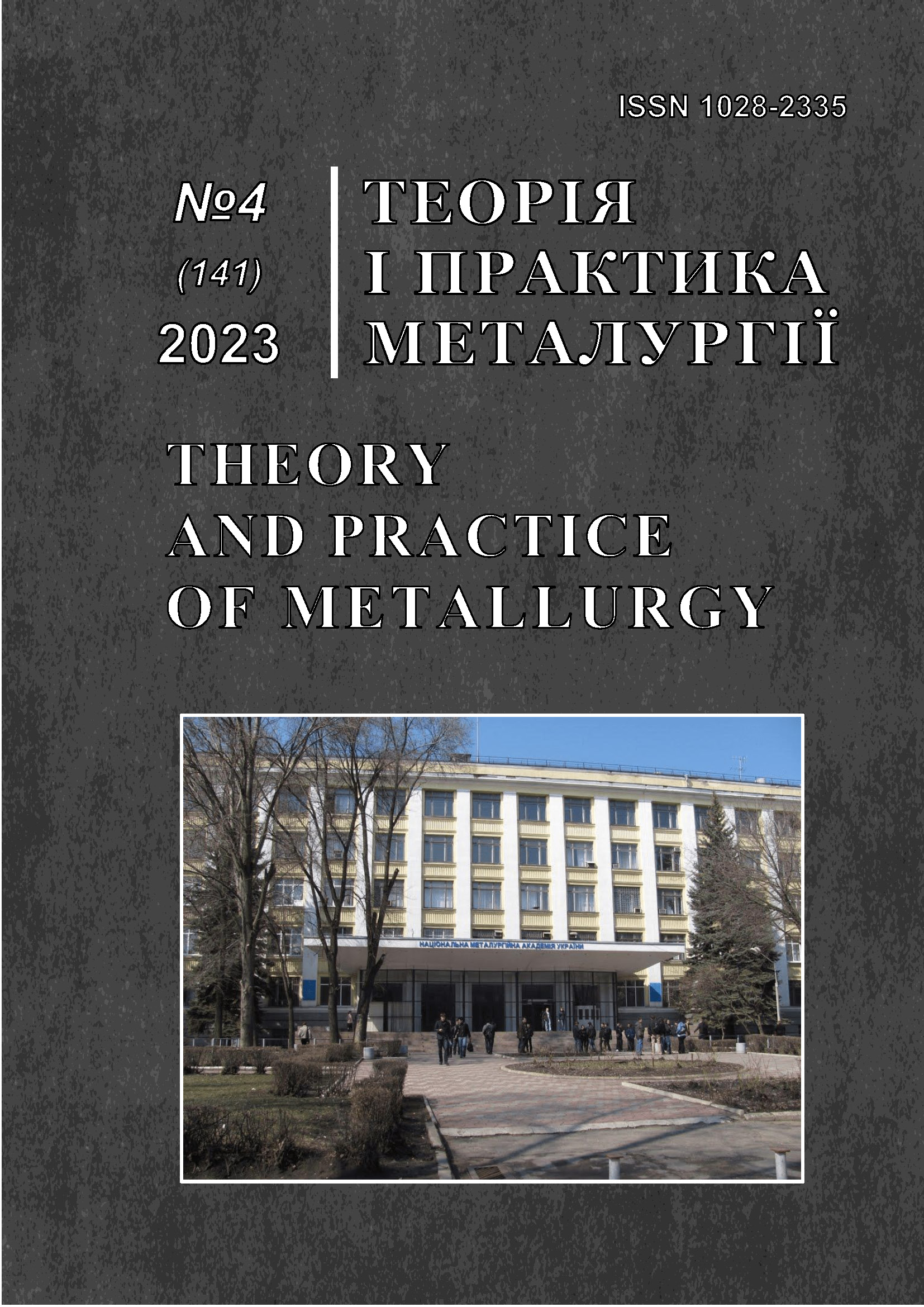A mathematical model of the motion of the screening surface under the conditions of its impact vibration action
DOI:
https://doi.org/10.15802/tpm.4.2023.04Keywords:
screening, mathematical model, impact vibration action, screening efficiency, hole clogging, metallurgical productionAbstract
The article presents an integrated approach to solving the actual problem of increasing the efficiency of screening charge materials, which is important for metallurgical production. The aim of the research is to develop a mathematical model of the motion of a loosely stacked screening surface under the conditions of its vibration and impact action. To achieve this goal, we have used a step-by-step systematic analysis of the theoretical study of of the motion of the sieving surface, which is considered as a material point whose motion limited to a certain interval, and is divided into six characteristic stages, each of which is analyzed separately. As a result of the study, the following were developed a differential equation of motion of the sowing surface and obtained dependencies that allow us to describe its motion in different dynamic states, taking into account the forces of inertia, elastic deformation, gravity, and friction. The conditions under which resonance occurs and the intensity of the sieve tossing increases. This allows minimizing the phenomenon of clogging of the holes of the sieving surface, which, in turn, increases the efficiency of the turn, increases the efficiency of the screening process. The scientific novelty of the study is the development of a new mathematical model that describes the movement of a loosely of a loosely laid sowing surface under the conditions of its vibration and impact action. This allows us to for the first time to study in detail the processes occurring during screening, and to determine the optimal conditions for reducing clogging of the seeding surface holes. The results of this study can be used to improve the process of preparing iron-containing raw materials for remelting, which is an urgent task for the metallurgical industry. The application of the developed mathematical model will increase the efficiency of screening out fines and fractions, reduce clogging of the holes of the screening surface, which will improve the overall quality of metallurgical processes. This, in turn, will help save resources and reduce production costs.
References
Mishchenko, I. M., et al (2011). Sovershenstvovanie tekhnologii i oborudovaniya aglomeratsionnogo proizvodstva. Metallurgicheskie protsessy i oborudovanie, (3), 35-44
Chervonenko, A. G., & Morus, V. L. (1997). Iznosostoykie dinamicheski aktivnye proseivayushchie poverkhnosti iz elastomerov dlya razdeleniya sypuchikh materialov i pul'p. Trudy II Mezhdunarodnogo simpoziuma po mekhani-ke elastomerov, Vol. 1, pp. 296-310
Zasel'skiy, V. I., Zaytsev, G. L., & Kitach, E. I. (2009). Promyshlennye issledovaniya raboty rezoniruyushchikh proseivayushchikh poverkhnostey. Teoriya i praktika metallurgii, (5-6), 15–18
Jiang H., et al. (2017). Kinematics characteristics of the vibrating screen with rigid-flexible screen rod and the behavior of moist coal particles during the dry deep screening process. Powder technology, 319, 92-101. https://doi.org/10.1016 /j.powtec.2017.06.036
Zaselskyi, V. Y., Popolov, D. V., et al. (2019). Udoskonalennia obladnannia ta protsesiv vuhlepidhotovky i koksosortu-vannia metalurhiinoho vyrobnytstva. Literiia
Screening machines & screeners. Siebmaschinenhersteller, Nr.1- RHEWUM GmbH: [Website]. https://www.rhewum.com/en
Zhao G.. et al. (2020). Research on Static and Dynamic Characteristics of Shear Spring of the Vibrating Flip-Flow Screen. Symmetry, 12(10), 1644. https://doi.org/10.3390/sym12101644
Gong S., Oberst S., & Wang X. (2020). An experimentally validated rubber shear spring model for vibrating flip-flow screens. Mechanical Systems and Signal Processing, 139, 106619. https://doi.org/10.1016/j.ymssp.2020.106619
Vibrating screen for solids and liquids - Heilig Mixing Technology. Heilig Mixing Technology. https://www.heiligmixers.com/products/screening-machine/vibrating-screen/
Tekhnologiya Kroosh. Multifrequencyequipment. Kroosh Tecnologies Ltd. http://kroosh.com/ru/tehnologiya
Chervonenko, A. G., & Morus, V. L. (1997). Iznosostoykie dinamicheski aktivnye proseivayushchie poverkhnosti iz elastomerov dlya razdeleniya sypuchikh materialov i pul'p. Trudy II Mezhdunarodnogo simpoziuma po mekhani-ke elastomerov, Vol. 1, pp. 296-310
Nadutyy, V. P., Gol'din, A. A., & Pogrebizhenskiy, G. A. (1991). Ispol'zovanie re-zoniruyushchikh lentochno-strunnykh sit v konstruktsiyakh vibratsionnykh grokhotov. Koks i khimiya, (8), 27-28
Shevchenko, V. H. (2017). Polichastotni hrokhoty dlia tonkoi klasyfikatsii i znevodnennia podribnenykh uranovykh rud ta vidkhodiv yikh pererobky. Heotekhnichna mekhanika, 137, 80-92
Resonance screens. Binder+Co. URL: https://www.binder-co.com/1124/Resonance-Screens#Basic-Info
Tsasiuk, V. V. (2004). Teoretychna mekhanika: navch. posib. Tsentr navch. lit.
Tsysarzh, V. V., & Marusyk, R. Y. Matematycheskye metody kompiuternoi hrafyky. Fakt
Downloads
Published
How to Cite
Issue
Section
License
Copyright (c) 2023 Zaselskyi V.Y., Popolov D.V.

This work is licensed under a Creative Commons Attribution 4.0 International License.
Authors retain copyright of the published papers and grant to the publisher the non-exclusive right to publish the article, to be cited as its original publisher in case of reuse, and to distribute it in all forms and media. Articles will be distributed under the Creative Commons Attribution 4.0 International (CC BY 4.0) licence.
Authors can enter the separate, additional contractual arrangements for non-exclusive distribution of the published paper (e.g., post it to an institutional repository or publish it in a book), with an acknowledgement of its initial publication in this journal.




